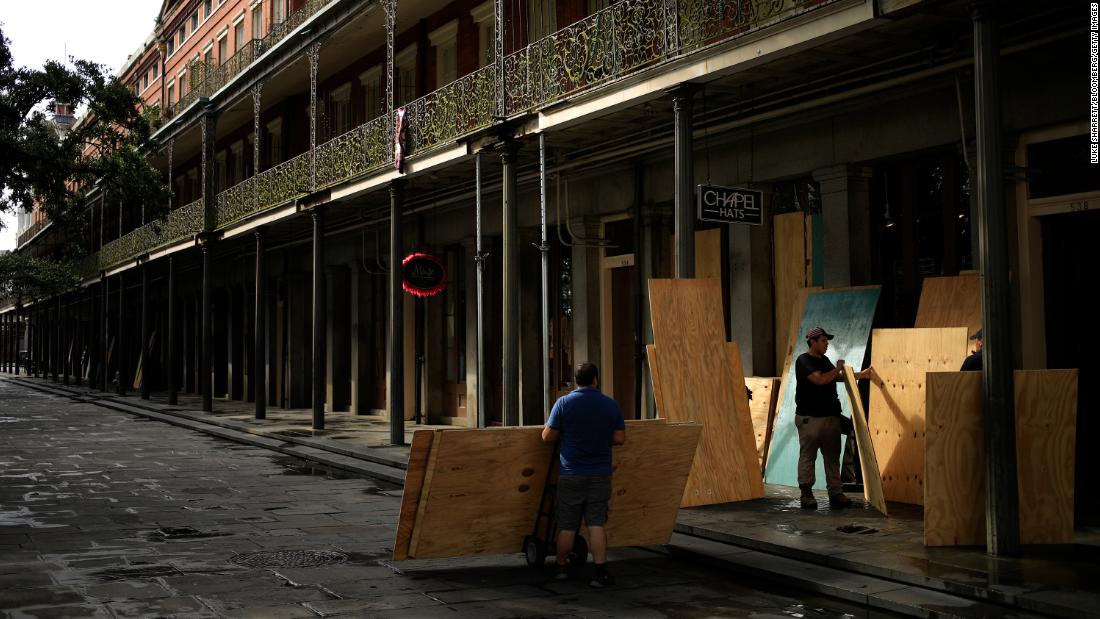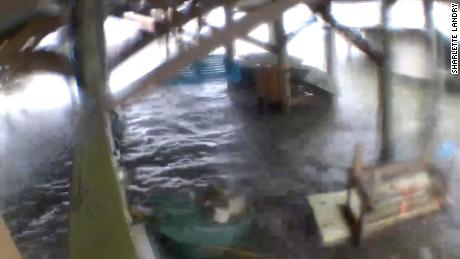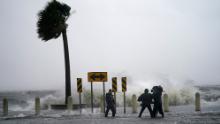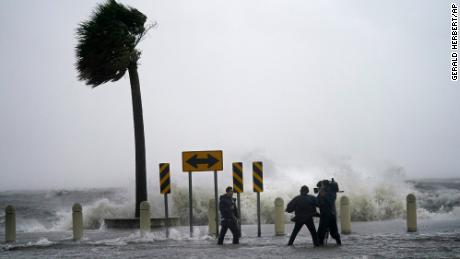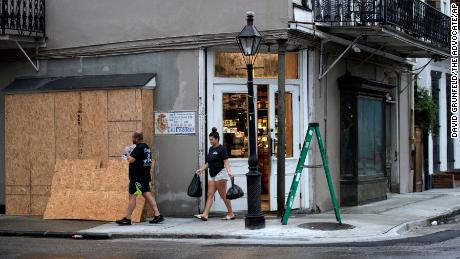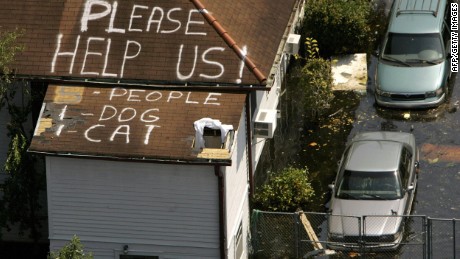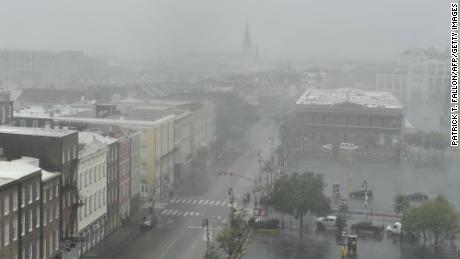Louisiana Gov. John Bel Edwards requested a major disaster declaration from President Joe Biden as his state continues to be pummeled by Hurricane Ida, his office said. Biden has already signed emergency declarations for Louisiana and Mississippi.
“Hurricane Ida is one of the strongest storms to ever hit Louisiana,” the governor’s release said. “It is our goal to assist our local agencies and the citizens of the state as quickly as possible, and we have pre-positioned search and rescue teams, boats and other assets to begin helping people as soon as it is safe.”
Ida is now tied with Hurricane Laura from last year and the Last Island Hurricane of 1856 as the state’s most powerful storm ever.
Edwards urged residents to remain indoors and to be patient, as the state does not know how soon first responders will be able to respond to calls for assistance.
“Once the storm has passed, you need to be prepared to shelter in place for the first 72 hours,” Edwards said. “We have every possible resource ready to go, to help you. We’ll get there sooner than 72 hours if at all possible, in order to rescue people across the state of Louisiana.”
Relief already headed to Louisiana
Edwards told CNN’s Jake Tapper on “State of the Union” that his state “is as ready as we can be,” but he expects Ida to be “a very serious test of our levy systems, especially in our coastal Louisiana.” He later said the state doesn’t anticipate any overtopping of the Mississippi River levees, or overtopping of the levees in the hurricane risk reduction system around the Greater New Orleans area.
The state invested significantly in shoring up the levy system after the catastrophic failure after Katrina. Edwards said Ida “will be the most severe test,” but he expects the levees to hold. “The next 24, 36 hours are just going to be very, very critical for us here in Louisiana.”
Despite the preparation, Hurricane Ida is causing a levee to overtop on the east bank of Plaquemines Parish between the parish line and White Ditch, according to the New Orleans National Weather Service office.
The Louisiana National Guard has been activated, with more than 4,900 guardsmen staged across 14 parishes. They have 195 high water vehicles, 73 boats and 34 helicopters ready to support and assist residents, the governor said.
Officials throughout the state had implored people to evacuate ahead of the storm, with some issuing mandatory orders to do so.
Andres and his team are sheltering in place until the storm passes. He said he’s encouraged by the pre-positioning he’s seen from both the federal government and non-governmental organizations since he arrived in New Orleans on Saturday night.
Once it is safe enough to do so, Andres said, his staff will be operational and make sure the kitchens are stocked.
Lt. Governor says ‘several dozen’ did not evacuate
Louisiana Lt. Gov. Billy Nungesser told CNN by phone Sunday he believes there were “probably several dozen” people who didn’t leave south Plaquemines Parish for Hurricane Ida and intended to ride out the storm.
Nungesser said he was convincing people to leave as late as 11 p.m. Saturday, but those who have stayed behind should be prepared.
“I was telling people if you’re going to stay, put an ax in your attic” because there may not be a chance to look for one once the water begins to rise, Nungesser said. “If it comes up and you’re trapped in an attic, you’ve got to cut your way out to get on the roof.”
Ronald Dufrene, a commercial shrimper, planned to stay on his 100-foot shrimp boat in Jean Lafitte, Louisiana, with his wife. He said he’s stayed on his boat for every storm for the last 42 years.
“I rode out three of them last year. Don’t get me wrong. This is a buzz saw we have coming,” he said. “Mother Nature’s a beast.
“We’re losing roofs right now,” Legg told CNN.
Legg said his home is safe and he is in a Category 5-rated structure. He said he was a police officer for 15 years and still works with search and rescue efforts to help his community.
Sharlette Landry evacuated Grand Isle, Louisiana, and watched her security camera feeds, which showed water quickly rising before her home lost power Sunday.
Arlene Mire of Port Vincent, Louisiana, planned to stay home initially. But she knows exactly how high the water must get to breach her home: 11 feet, 3 inches.
“My house has drowned before,” she said. “We’ll lock it up and boogie. We won’t stay in the house when the water comes.”
Ida reversed the flow of the Mississippi River
A tornado watch is in effect until 8 p.m. ET for parts of Alabama, Florida, Louisiana and Mississippi, according to the Storm Prediction Center. Quick-moving, brief tornadoes will be possible throughout Sunday.
There is also a danger of life-threatening storm surge Sunday in areas along the coasts of Louisiana, Mississippi and Alabama.
Data from the US Geological Survey (USGS) indicated Sunday that the flow of the Mississippi River in New Orleans partially reversed its flow due to the strong storm surge and winds from Hurricane Ida pushing up the river. This is something the USGS says is “extremely uncommon.”
“I remember, off hand, that there was some flow reversal of the Mississippi River during Hurricane Katrina, but it is extremely uncommon,” Scott Perrien, a supervising hydrologist with the USGS Lower Mississippi Gulf Water Science Center in Baton Rouge, Louisiana, told CNN.
Perrien noted that the river level rose about 7 feet due to the storm surge pushing up the river at the USGS gauge, located in Belle Chasse, about 20 miles south of New Orleans in southeastern Louisiana.
“The river is feeling the effects of the storm over a large area, all the way up to Baton Rouge. The river has risen 1.5 feet in the past 12 hours as the surge pushes up the river, and the water level will likely rise more in the coming hours here in Baton Rouge,” Perrien told CNN.
The Mississippi River is now back flowing in the normal direction, though, according to CNN meteorologist Gene Norman.
New Orleans better prepared for Ida, official says
Hurricane Ida is the fourth hurricane to slam Louisiana since last August and the state’s third major hurricane landfall in that time span.
Hurricane Katrina, which hit Louisiana in 2005 as a Category 3 storm with 125 mph sustained winds, had a storm surge up to 24-28 feet, according to the NHC.
The water topped levees and flood walls, and more than 80% of New Orleans flooded. More than 1,500 people in Louisiana died.
Katrina brought storm surge of 15 to 19 feet in eastern New Orleans, St. Bernard Parish, and Plaquemines Parish, while the surge was 10 to 14 feet in western New Orleans along the southern shores of Lake Pontchartrain, according to the NHC.
By comparison, Hurricane Ida is forecast to bring a lower storm surge of 12-16 feet to some areas of southeast Louisiana, the NHC says. And near New Orleans it’s expected to be even lower: 8-12 feet outside New Orleans and 5-8 feet along Lake Pontchartrain.
That’s because the wind field was larger for Katrina: 90 miles from center at landfall, compared to 50 miles for Ida.
“This is a different city than it was August 28th 2005, in terms of infrastructure and safety,” Ramsey Green, New Orleans deputy chief administrative officer for infrastructure, told reporters Saturday at a news conference ahead of Hurricane Ida’s landfall.
Green called the city’s levee system “an unprecedentedly powerful protection for the city,” which has three lines of defense: the coast, the wetlands and the levee system.
“From that perspective, we need to be comfortable and we need to know that we’ll be in a much better place than we were 16 years ago,” Green said. “That said, if we have 10 to 20 inches of rain over an abbreviated period of time, we will see flooding. We don’t know at this moment — we see 15 to 20 inches over 48 hours or less, and we can handle it, depending on the event.”
New Orleans Emergency Management Services announced it has suspended all operations as Ida continues to blow through.
NOEMS said operations will resume once conditions are safe for first responders.
CNN’s Matt Egan, Gregory Lemos, Brandon Miller, Travis Caldwell, Michael Guy, Aya Elamroussi, Jackson Dill, Ed Lavandera, Amanda Jackson, Chris Boyette, Paul P. Murphy, Melissa Alonso, Hollie Silverman and Haley Brink contributed to this report.

